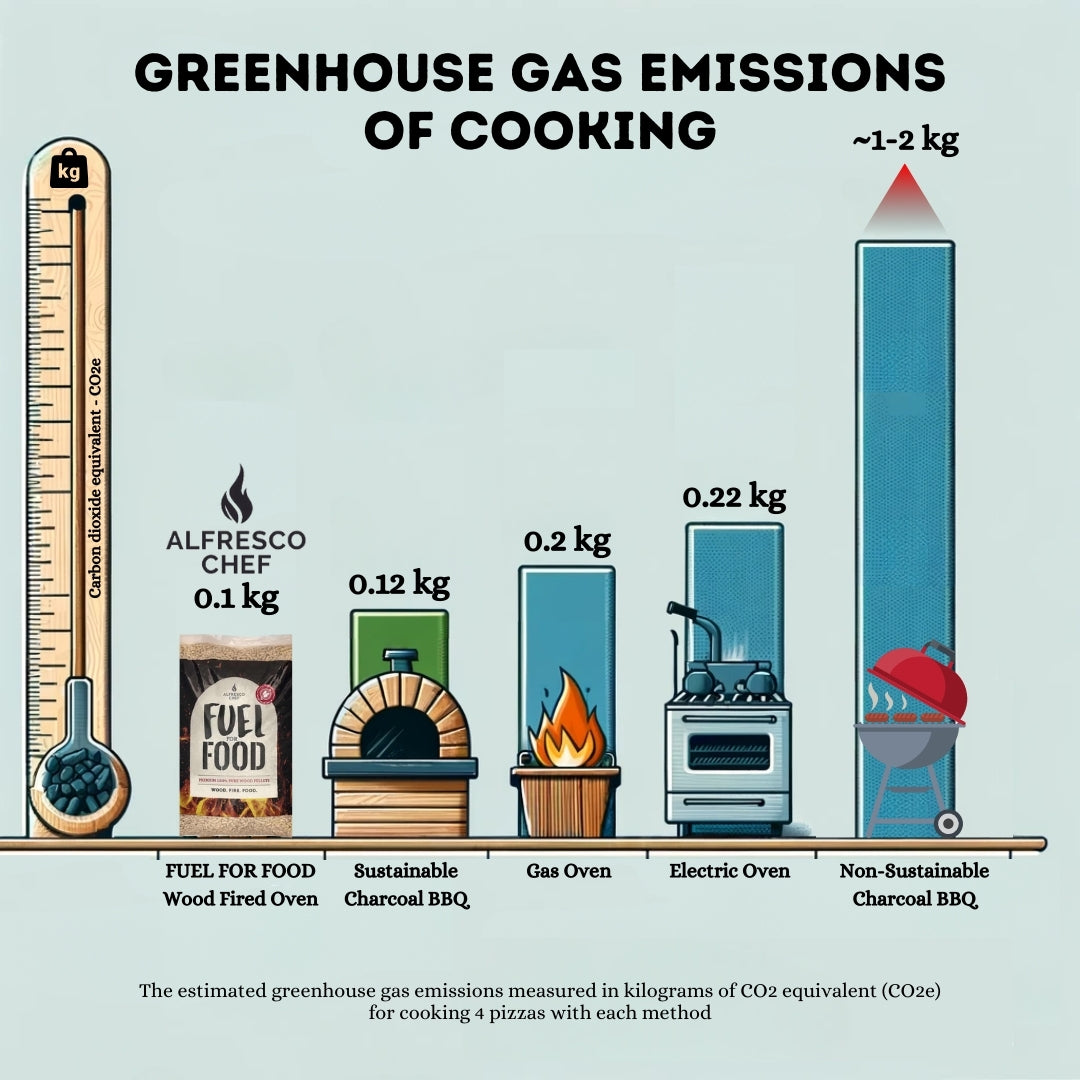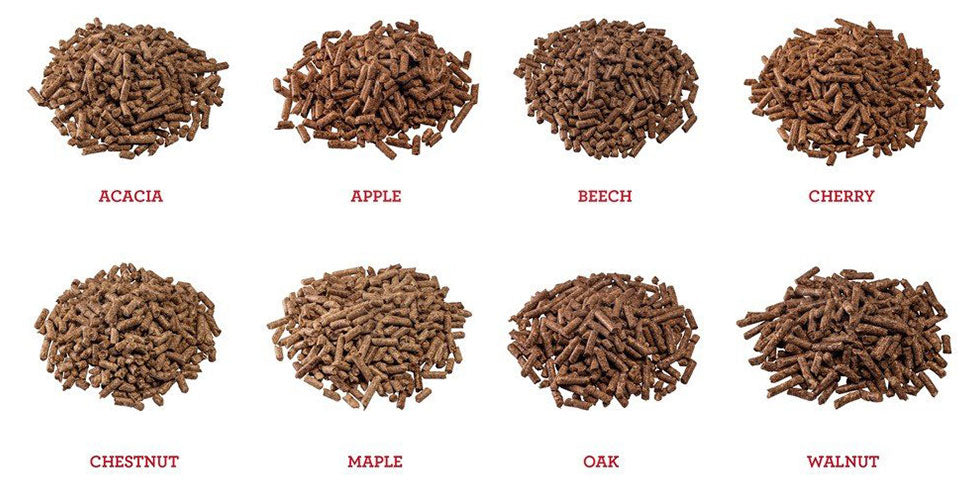This week we are super excited to team up with Mathew Hampshire-Waugh to learn more about sustainable cooking.
Mathew is the author of two books, the first ‘Climate Change and the road to Net-Zero’ which takes a deep dive into the science, technology, economics, and politics of climate change and the low-carbon transition.
His second, is a cookbook, ‘Climate Change Kitchen’, where the author ‘hacks’ classic recipes to reduce the carbon footprint by an average of 75%, and reduce saturated fat by 40%, creating great tasting meat & plant based dishes that are good for you and good for the planet.
Here, at Alfresco chef we were keen to engage with Mathew to find out more about the importance of the footprint of food and how Alfresco chef stacks up.
Alfresco Chef: Mathew, you have a doctorate in materials science, a decade working in new energy investments, a best-selling book on climate change, and have founded a climate consultancy… what on Earth made you write a cook-book?
Mathew: Well, it was the first book that opened my eyes to the importance of the food on climate change. Agriculture is responsible for one quarter of all emissions, and it uses one third of all land on Earth. Reaching net-zero across other sectors like transport, industry, and amenities can be accomplished with technological change and will end up cheaper and better. But food is different, net-zero agriculture will rely more heavily on cultural changes in what we cook and how we cook it.
Alfresco Chef: So, you mention we need to change what and how we cook, and we have started working together on some analysis for Alfresco Chef. Can you give us an idea of how environmentally friendly wood fired cooking actually is?
Mathew: Yes, no problem. At its most basic level wood fired cooking can certainly be low carbon. That’s because the energy source is biological. It comes from biomass/trees that have grown in the recent past so can in theory be net-zero carbon emissions. That’s because when a tree grows it sucks carbon dioxide from the air and stores that carbon in the growing trunks, branches, and soil. The wood can then be harvested and burnt as fuel, at which point the CO2 will return back into the atmosphere. As long as the same quantity of wood harvested is regrown in new trees or branches, then the process is fully renewable – its circular.
Alfresco Chef: Okay, but there is always a catch, right? What about transporting the fuels or what if the trees aren’t regrown?
Mathew: Absolutely correct. If the trees aren’t regrown, then the circular process is broken, and it is no longer a renewable fuel. So, it is super important to ensure the wood fuel has come from sustainable sources. And yes, there are still some indirect CO2 emissions from processing the wood into pellets and transporting the woodchips.
Alfresco Chef: Great, so this is what we have been figuring out. Can you tell us exactly how sustainable our FOOD FOR FUEL wood pellets are?
Mathew: Yes, so we have calculated what’s called the lifecycle emissions of FOOD FOR FUEL pellets. The journey starts in the Ukraine where the fruitwood is sourced from orchards in ecologically safe regions, so the direct emissions are net-zero because its circular. And the Ukraine itself has a great record of reforestation over the last two decades adding net 3% to forested land which compares to about 2% for Europe as a whole. The harvested wood is debarked, chipped, dried, and turned to pellets using no chemical additives. This process uses some energy for chipping and heating, but it’s a relatively small amount based on our calculations. The pellets are then transported to the UK by truck which does create some associated emissions. Overall, the lifecycle emissions of FOOD FOR FUEL pellets are around 400 grams of CO2e per kg of pellet.
Alfresco Chef: Okay, so that sounds good but to really understand that number we need to know how our FOOD FOR FUEL wood pellets stack up to other cooking fuels right?
Mathew: Right! So, to compare the FOOD FOR FUEL pellets we calculated the lifecycle CO2 emissions (including processing and transport) for cooking pizza for a family of four. We compared an Alfresco Chef oven, a gas oven, an electric oven, and a charcoal BBQ pizza oven. FOOD FOR FUEL pellets and the sustainably sourced charcoal come out lowest as the direct emissions are net-zero (charcoal also comes from wood). However, FOOD FOR FUEL pellets were slightly lower because you need half as much wood compared to charcoal. And that’s because the Alfresco oven traps the heat better than a BBQ set-up. Gas and electric cooking have higher emissions as they are powered by non-renewable fossil fuel energy. But by far the worst is non-sustainable charcoal because no new trees are grown to recapture the CO2. So, the message here is clearly biofuels are good but only if you source sustainably.
Alfresco Chef: If sustainable biofuels are good then why don’t we power everything with wood?
Mathew: Ha, well now you are getting into some serious energy questions. Sustainable biofuels are great for small, efficient, outdoor cooking uses like Alfresco Chef pizza ovens, and yes there are sustainable biofuel power plants operating around the world and in the UK. However, scaling biofuels is difficult and expensive. In the future renewable electricity from wind and solar will provide most of our day-to-day energy needs. Also, using biofuels in indoor settings where there is little ventilation creates harmful indoor air pollution. One of the key challenges for the global energy transition is to provide clean cooking for the 2 billion people around the world who still rely upon open fires inside their homes powered by wood, dung, or coal.
Alfresco Chef: And so we have spoken about cooking choices but what steps can you take to further reduce your food carbon footprint?
Mathew: The key is to understand that the single biggest driver of the carbon footprint of food is the type of ingredients you choose. And there are a set of seven simple rules I have laid out in ‘Climate Change Kitchen’ to help you make ingredient choices that will reduce the carbon footprint, and reduce the saturated fat and calories, of seventy of the World’s most popular dishes. And before you ask, yes the recipes still use meat, fish, and dairy – they use smart ingredient choices for each. Also, these rules can be applied more broadly to cooking, shopping, and catering in general. So, I think in the near future ‘Climate Change Kitchen’ and Alfresco Chef may be teaming up on recipe ideas and cooking tips aimed at low-carbon cooking. So exciting things to come… watch this space!
Alfresco Chef: Big thanks to Mathew Hampshire-Waugh for teaming up with Alfresco Chef. And to find out more about Mathew’s books, recipes, and how to decarbonize your life go to:




Leave a comment
This site is protected by reCAPTCHA and the Google Privacy Policy and Terms of Service apply.